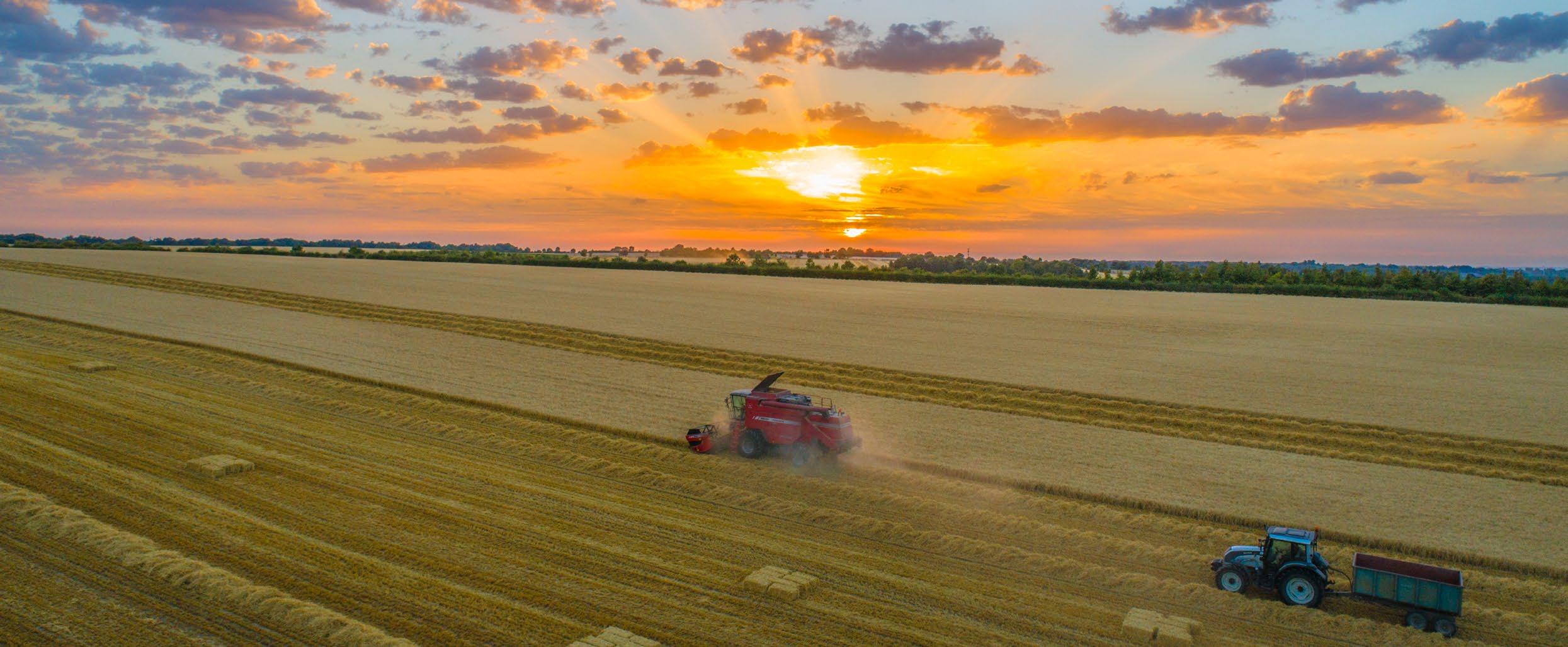Harvest 2025 round up
Who could have imagined that, after the challenge of the 2024 season, 2025 would bring an even greater test to our growers? The run-up to this year’s harvest presented a further challenge. Following another fairly wet winter, which gave way to the driest spring and summer on record, growers were left with many stressed crops and some spring crops barely getting any rain from drilling to harvesting.
The season truly highlighted the resilience of winter crops and the importance of soil types. Heavier soil types tended to fair better than the light soils, while those who used organic manure saw their efforts pay off with better moisture retention.

The table below shows average yields collated from Fisher German clients results from harvests in 2022, 2023, 2024 and 2025. These results show some quite low yields as expected, but also that harvest 2025 wasn’t a complete disaster, with average yields up on the year for Winter Barley and Winter OSR.
As always, we are determined to look ahead with optimism as we embark on a new cropping year. While the current market conditions might make it tough to remain positive, we hope that the weather is on our side for the next 12 months.

Grain market prices
October 2025 (Midlands) ex farm
Grain market report
Market snapshot: This week grain markets plunged to fresh lows following a bearish USDA quarterly stock report and a huge amount of Argentine sales during the 2-day tax holiday together with the uncertainty hanging over the US/China trade deal. Yet, prices are starting to bounce back from oversold levels as buyers consider buying opportunities. October will be critical, particularly the upcoming Trump/Xi summit on October 22 and Brazil’s unpredictable weather. Meanwhile, the US government shutdown threatens to pause USDA reports for weeks or even months, adding further uncertainty.
Wheat
Wheat prices continue to fluctuate, swayed daily by political and environmental factors heavily influencing the current market.
There is a large global supply with Russia and Ukraine leading strong exports. The USA forecast was set for record yields, but that’s now in doubt. A weaker US dollar gave prices a lift in mid-September, but its rebound has made the US wheat price and increased import costs.
Droughts worldwide are raising concerns for next year’s global crop supply, hinting at possible premiums ahead.
Hopes for a US–China deal gave some optimism but this fizzled as there is no deal yet. Argentina’s suspension of export taxes until 31 October has boosted their exports, whilst putting US, EU and UK export markets under pressure during this crucial marketing window.
Barley
Malting barley - there is a surplus in Europe, but with demand subdued and farm margins tight, the planted area is expected to reduce in the coming season.
Feed barley – the domestic demand is robust, especially with forage in short supply. Export demand is weak, though Scotland’s surplus is helping to set a muchneeded price floor. Farmers are holding back sales, so if demand stays strong into the winter season, prices could climb.
Rapeseed / oilseeds
This market is influenced heavily by global economic and political factors. The lack of a US/China deal, Argentina’s tax suspension, and currency exchange rates have left the outlook looking fragile. There is plenty of product available, but the potential for sales is limited for now.
Oats
Milling oat demand is minimal and prices are lower to reflect this. Milling prices are falling to levels normally achieved for feed oats. UK premiums are now the lowest in Western Europe, and some product being diverted to feed due to quality issues.
Pulses
Demand for UK and EU pulses is weak, with a bumper Australian crop looming. Beans can’t compete with cheaper protein
sources such as rapemeal, and other lower priced proteins, while peas remain relatively stable but face global oversupply, especially from Canada.
Seed & planting
Winter barley and wheat drilling is progressing well thanks to favourable soil conditions. New wheat varieties (e.g., KWS Solitaire, Skyfall, SY Cheer) are all showing strong performance. Winter beans (Vespa, Vincent) are available, but in limited supply.
Fertilisers & energy
• Gas: EU futures remain stable around €32/MWh on high inventories; US prices are under pressure due to mild weather
• Ammonia: Prices are climbing due to tight supply and outages
• Urea: Prices are falling, but Indian tenders could provide support to the market
• Phosphates: Weak, but limited availability is keeping prices capped
• Potash: Flat-to-soft, with global oversupply






